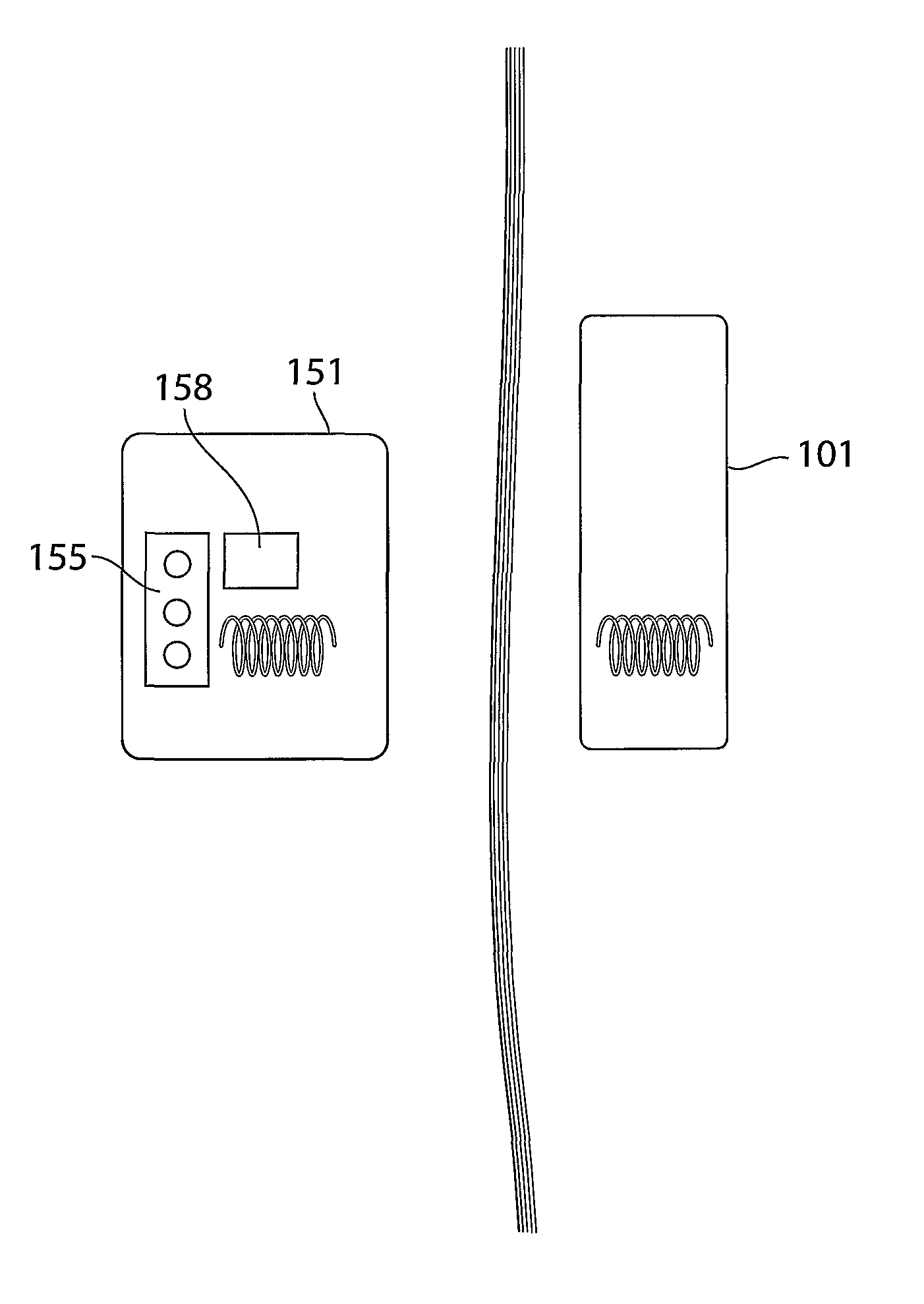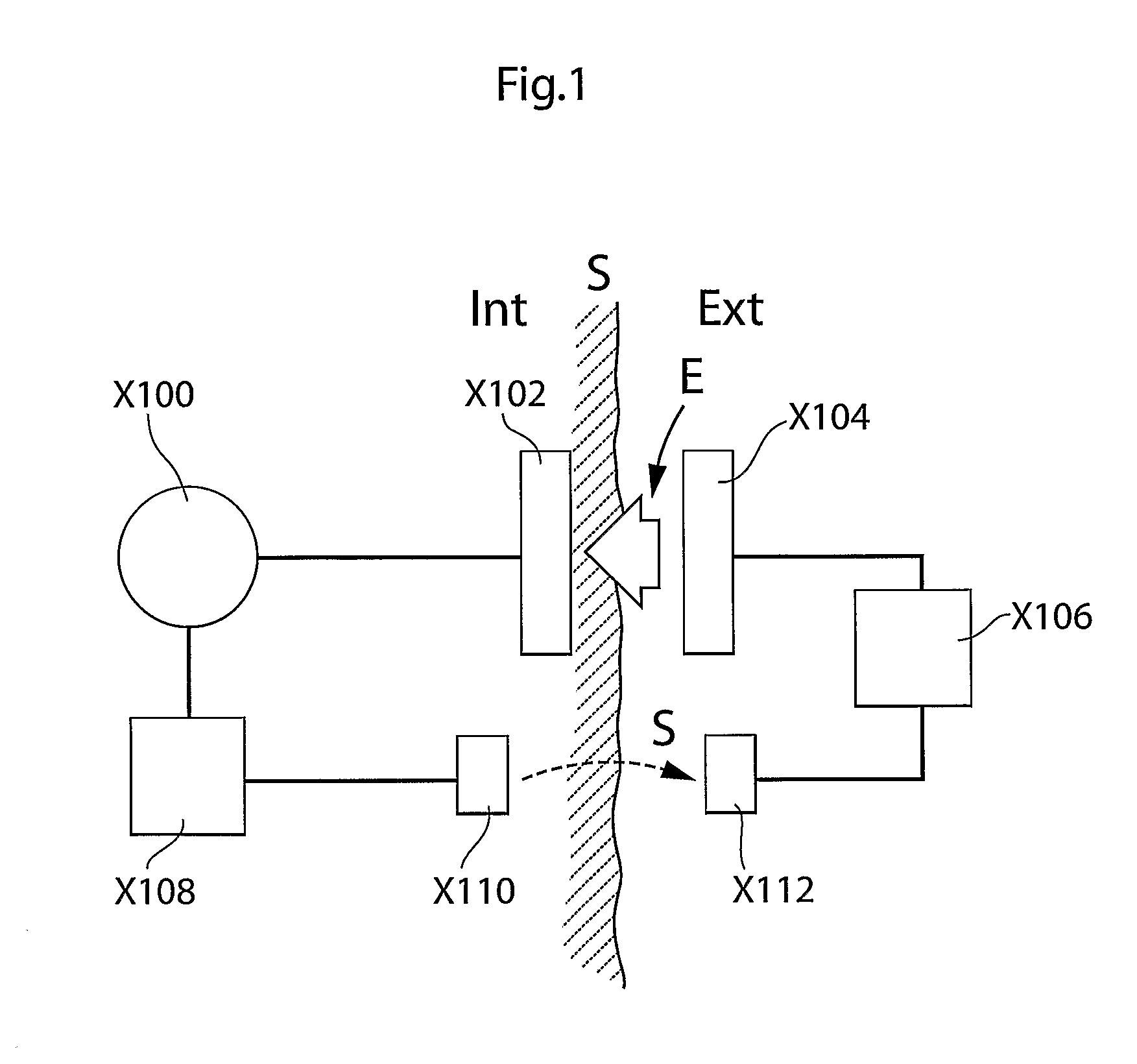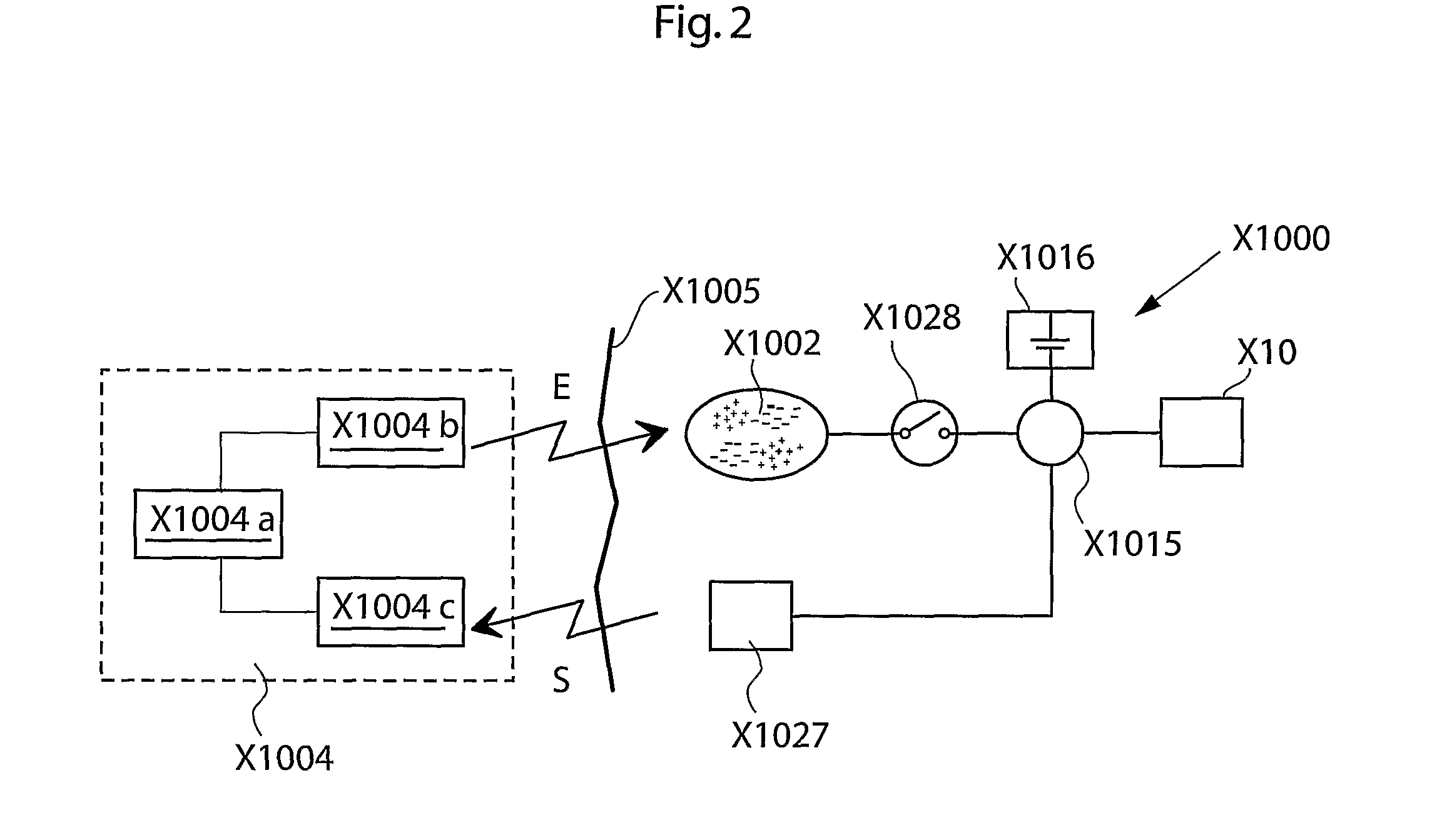Method and apparatus for supplying energy to an implant
a technology for energy supply and implants, applied in the field of energy supply methods and devices for implants, can solve the problems of disturbing the intended medical effect of the device, affecting the efficiency of energy transfer, and affecting the life of the device, so as to achieve faster charging, increase the life of the charge occasion, and increase the energy supply rate
- Summary
- Abstract
- Description
- Claims
- Application Information
AI Technical Summary
Benefits of technology
Problems solved by technology
Method used
Image
Examples
Embodiment Construction
[0186]FIG. 1 shows a first embodiment of a system of the invention. As shown in FIG. 1, the system comprises an implantable medical device X100 which is electrically powered and which is shown in FIG. 1 as being implanted in a patient, the skin of the patient being indicted in FIG. 1 by means of a line S. As shown in FIG. 1, the medical device also comprises an internal energy receiver X102 which is arranged to power the medical device.
[0187]The system also comprises an external energy source X104 which, as shown in FIG. 1, is adapted to be located externally to the patient for wireless supplying energy to the internal energy receiver X102.
[0188]Versions of one embodiment of the invention will now be described by means of reference to FIG. 1 and FIGS. 4-8.
[0189]As shown in FIG. 4, the external energy source X104 is equipped with a primary coil X11, L1, from which the external energy source X104 is arranged to transmit energy inductively to a first secondary coil X10, L2, in the inte...
PUM
 Login to View More
Login to View More Abstract
Description
Claims
Application Information
 Login to View More
Login to View More - R&D
- Intellectual Property
- Life Sciences
- Materials
- Tech Scout
- Unparalleled Data Quality
- Higher Quality Content
- 60% Fewer Hallucinations
Browse by: Latest US Patents, China's latest patents, Technical Efficacy Thesaurus, Application Domain, Technology Topic, Popular Technical Reports.
© 2025 PatSnap. All rights reserved.Legal|Privacy policy|Modern Slavery Act Transparency Statement|Sitemap|About US| Contact US: help@patsnap.com



